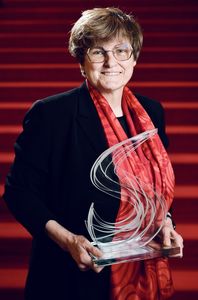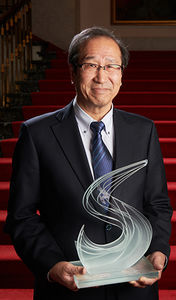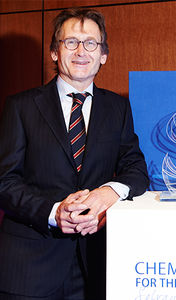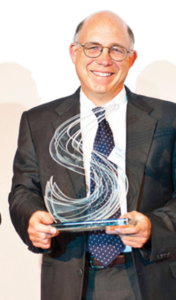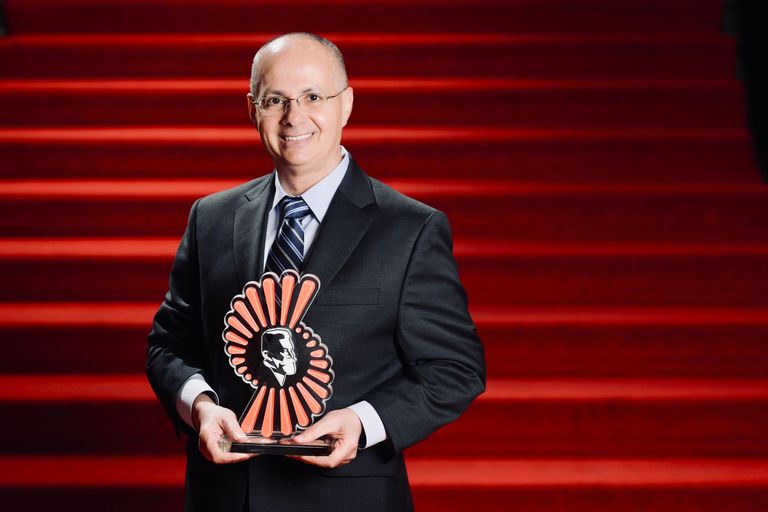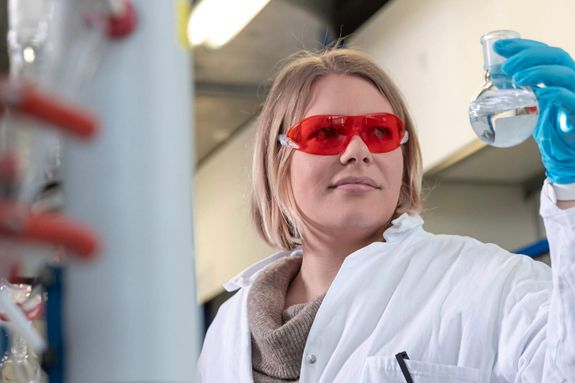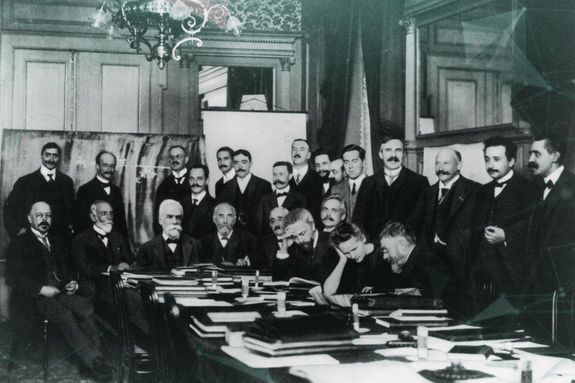Our scientific Hall of Fame
Past Laureates of the “Science for the Future Ernest Solvay Prize”
2022
Katalin Karikó, for her work on the biochemical modification of synthetically produced messenger RNA (mRNA), which has enabled the rapid development of COVID vaccines and saves many lives. This technology could also help fight other diseases like cancer, influenza, malaria, or HIV.
Professor Karikó is an adjunct professor at the University of Pennsylvania, where she worked for 24 years before joining BioNTech SE in 2013 as a senior Vice-President. She is also professor at University of Szeged, Hungary, where she received her PhD in biochemistry in 1982.
For decades, her research has been focusing on RNA-mediated mechanisms with the ultimate goal of developing mRNA for protein therapy. She investigated RNA-mediated immune activation and together with American physician and immunologist Drew Weissman, she discovered that nucleoside modifications suppress the immunogenicity of RNA, which widened the therapeutic potentials of mRNA. Their patent was used to create the FDA-approved covid-19 mRNA vaccines by BioNTech/Pfizer and Moderna.
In 2023, Prof. Karikó received the Nobel Prize in Physiology or Medicine jointly with Drew Weissman, for their discoveries concerning nucleoside base modifications that enabled the development of effective mRNA vaccines against COVID-19.
2020
Carolyn Bertozzi, for her invention of bioorthogonal chemical reactions that can be performed in living cells and organisms. These reactions can be used to label specific molecules in cells for imaging, for drug target identification and the creation of next-generation biotherapeutics – ultimately helping to diagnose and treat diseases in the long term, particularly in cancer and infectious diseases.
Carolyn Bertozzi, Professor of Chemistry at Stanford University (U.S.A.), is a pioneer and leading scientist in the fields of chemical biology and glycoscience. She coined the term “bioorthogonal chemistry” for chemical coupling reactions that can take place within living cells while maintaining their integrity. Professor Bertozzi has applied bioorthogonal chemistry to probe cell surface glycosylation and to develop new therapeutics and diagnostics for unmet medical needs.
This has ignited many allied fields, including physical organic and synthetic chemistry, as well as biomedical science and drug discovery. Biotherapeutics enabled by these chemistries are now having real clinical impact, while scientists have found bioorthogonal chemistry techniques to be powerful tools for probing cell biology at the molecular scale.
In 2022, Prof. Bertozzi jointly received the Nobel Prize in Chemistry, with Morten Meldal and K. Barry Sharpless, for the development of click chemistry and bioorthogonal chemistry.
2017
Susumu Kitagawa, for his work in developing metal organic frameworks, a new class of materials with a range of potential future applications, including the capturing of polluting gasses.
Susumu Kitagawa, Deputy Director-General, Distinguished Professor of Kyoto University Institute for Advanced Study and Director of the Institute for Integrated Cell-Material Sciences at Kyoto University, is a pioneer and leading scientist in the field of metal organic frameworks (MOFs), a new class of nanoporous materials.
He was the first to discover and to demonstrate the porosity of MOF - also called porous coordination polymers - with gas sorption experiments. Kitagawa pioneered the functional chemistry of these metal complexes and discovered flexible MOFs, which are dissimilar to conventional porous materials.
MOFs look like small cages made from networks of metallic knots linked by organic molecules. The “holes” in the network could be able to capture gasses like CO2, methane or hydrogen and transform them for usage in chemistry or energy. The unprecedented characteristics of these molecular architectures could in the future lead to a broad range of promising new applications, mainly related to their absorption and separation capability. These include gas storage and release, purification, drug delivery, insulating material and the management of indoor air quality.
2015
Ben Feringa, for his work on groundbreaking research on molecular motors, a research field that paves the way to new therapeutic and technological applications with nanorobots.
Ben Feringa, Professor at the University of Groningen, and his teams have over the past 15 years focused on revealing the potential of synthetic chemistry to create new structures and novel functional materials such as molecular switches and motors to perform ultra-precise and controlled actions. His research found that by using light, molecules at nanometer scale can be manipulated and turned into motors.
His breakthrough design of the first rotary molecular motor sets the stage for a range of future applications, such as storage of information on a molecular scale, the development of responsive materials or smart catalysts for chemical processes, while in healthcare they could be used to develop artificial muscles or as medication that can be switched on and off for precision therapy. Within the next twenty or thirty years, these molecular motors will power nanorobots which will be capable of better targeting specific molecules in therapeutic treatments.
In 2016, Prof. Feringa received the Nobel Prize in Chemistry, together with Sir J. Fraser Stoddart and Jean-Pierre Sauvage, for their work on molecular machines.
2013
Peter G. Schultz, for his work at the interface of chemistry and life sciences, which has resulted in new methods to synthesize molecules with novel chemical and biological properties and has impacted chemistry, materials science and medicine.
Peter G. Schultz is a Professor at the Scripps Research Institute in California, and Director of the California Institute for Biomedical Research. He pioneered a method that enables the expansion of the genetic codes of living organisms to include new building blocks beyond the 20 amino acids common to all forms of life.
His early work exploited the molecular diversity of the immune system to develop antibodies that selectively catalyze chemical reactions, much like natural enzymes. He extended these combinatorial concepts to many areas, and was the first to apply this approach to materials science, which made it possible to simultaneously synthesize and characterize the properties of innovative materials for use in electronic devices, catalysis, energy storage and the environment.
More recently, by developing highly sophisticated methods to screen “chemical libraries” for their effects on living cells, Schultz’s team identified small, biologically active molecules with important implications for regenerative medicine and the treatment of infectious disease, autoimmune disease and cancer.

